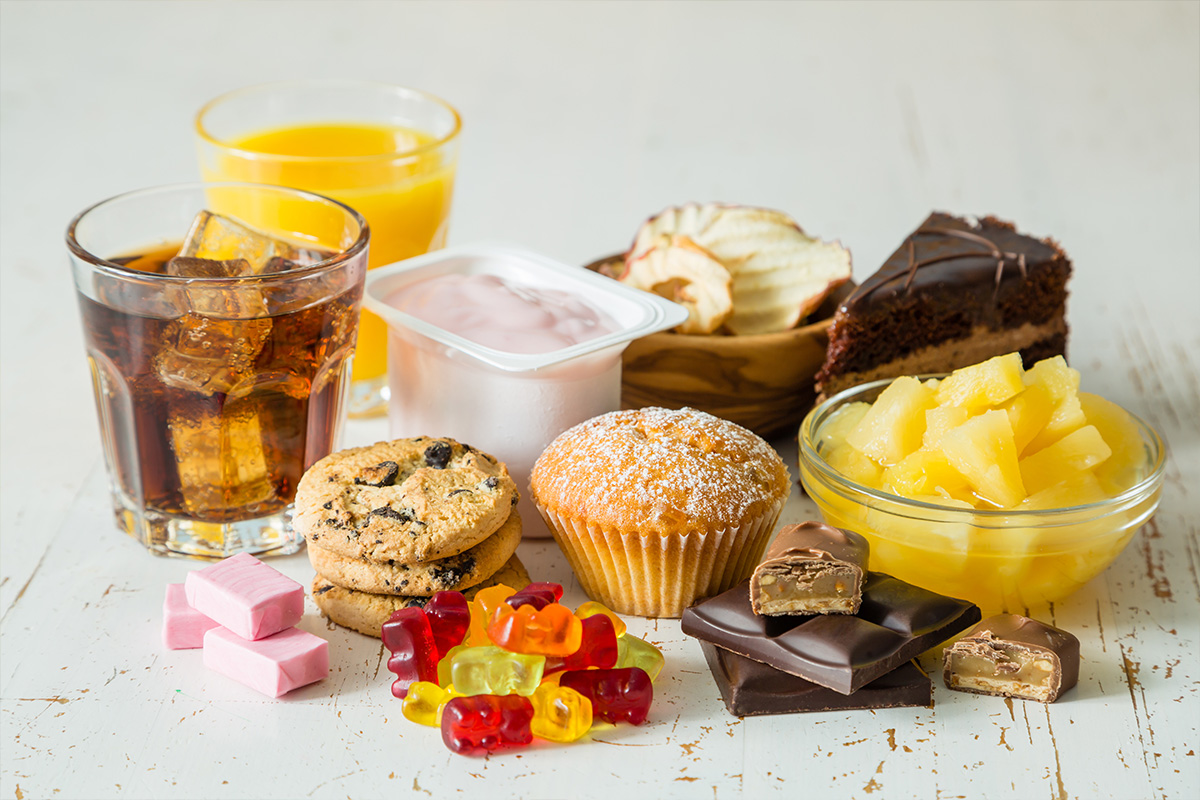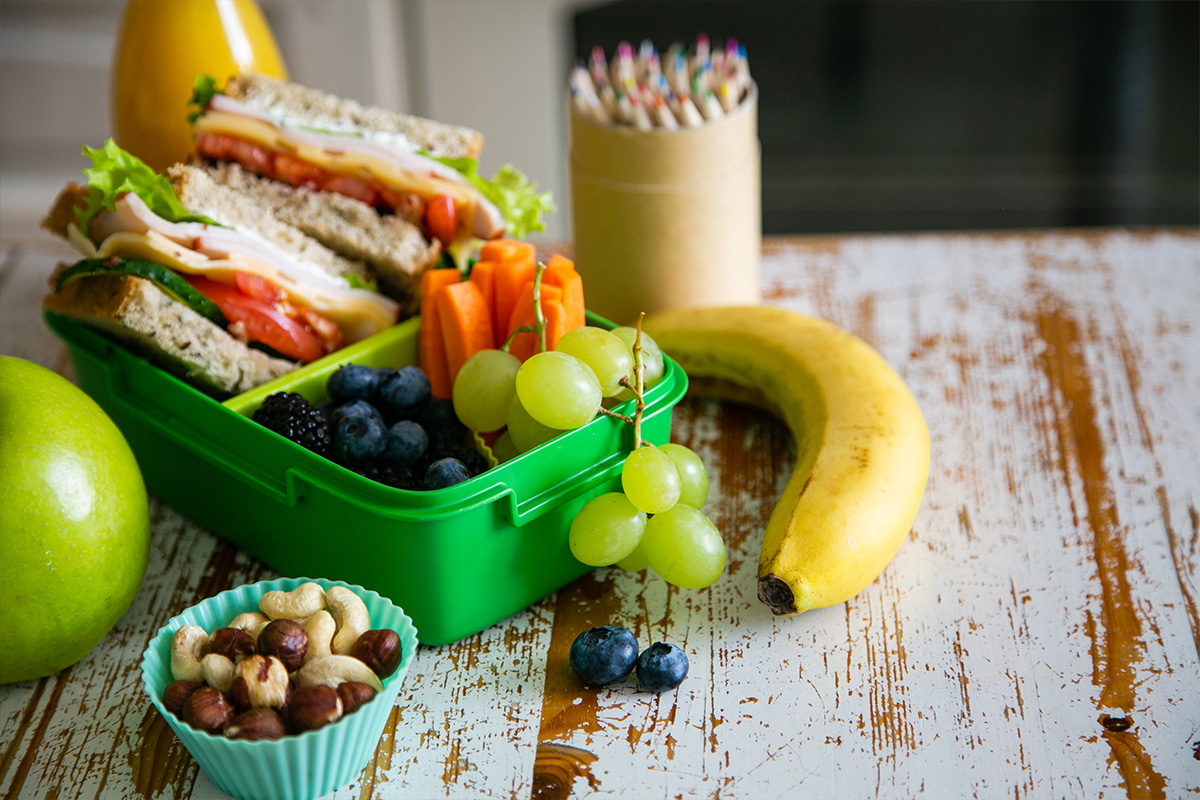Children are a group of people particularly sensitive to the effects of improper diet. This is due to the increased demand for energy during the period of intensive growth and development. A balanced, richly nutritious diet for the youngest is extremely important to ensure proper maturation.
How to teach children healthy eating habits?

Talk to and educate your child about proper nutrition, and shape proper eating habits. Children naturally imitate the behavior of others, so parents should themselves practice a healthy approach to diet and show the right way to maintain proper eating practices. The patterns that the child draws from have a huge impact on his approach to taking care of his own health. It is worth educating and explaining which products are healthy and which can be harmful to eat. It is a good idea to justify why a given product should not be consumed in excess, e.g. processed food will not allow you to focus on the lesson or will not provide energy for fun.
What causes overweight among children?
During childhood, habits are developed that accompany us in adulthood. Overweight among children is often compounded by mass media, advertising, where processed food reigns. It is not without significance to reduce physical activity for the passive spending of free time in front of the TV and "eating" boredom. The family plays a huge role in the development of childhood obesity. Too much body mass of a baby is often associated with incorrect parental habits, lack of shared meals or insufficient knowledge of carers about proper nutrition.
The parent should ensure that their child's diet contains a complete set of all necessary vitamins and minerals. An important aspect is the reduction in the child's daily diet of processed, high-energy products with impoverished nutritional value, such as sweets and fast foods, which contain large amounts of simple sugars and trans fats.
What should the diet look like?
It is best that the child's diet consists of about 4-5 meals a day, but it is a very individual matter. Meals should be eaten every 3-5 hours to maintain a constant energy level. Maintaining energy balance is of utmost importance - this means that on a given day you should provide your child with food as many calories as he needs. The activities planned during the day should be taken into account - when the child has a lot of movement, they should be given greater access to food.
Products to avoid in a child's diet:

- processed meat such as sausages, sausages, etc. - if we want to include sausages, choose good quality, containing at least 90% meat. Most sausages contain a lot of additional chemical ingredients, and some do not even contain meat at all, but only so-called. MSM - mechanically separated meat. MSM is bones, cartilage, ridges, skins, wings, necks, fat;
- fish fingers - they contain a large amount of chemical additives that adversely affect the child's health. These are products coated with breadcrumbs and deep fried;
- fruit yogurt - they contain a lot of sugar about 2-3 tablespoons / 100g of product. Fruit ripples in yogurt are "improved" using artificial colors and flavors. Many yogurts or cheese contain thickeners, such as modified starch. It is better to choose natural yogurt and add fresh fruit to it;
- breakfast cereal - it's mainly a source of sugar, not a full-fledged breakfast. Sweetening substances are added to flakes of this type - sugar or glucose-fructose syrup, additionally they are enriched with synthetic vitamins and minerals. It's worth replacing cereal with homemade granola or oatmeal, millet, etc.;
- sweet rolls, buns, - these products are rich in sugar, artificial colors, caramel, fat, emulsifiers. It is worth serving children to school sandwiches made of rye bread, prepared in real sourdough;
- crisps, salty snacks - they contain large amounts of salt, harmful hydrogenated fat, dyes and flavor enhancers. The most dangerous substance is acrylamide - a carcinogenic compound;
- sweets - they consist mainly of sugar, which causes a surge of energy and a state of excessive agitation. Sweets are "empty" calories, which means that apart from them, they don't have anything to nourish the body. They are also rich in trans fats, which work, among others carcinogenic, pro-atherosclerotic, pro-diabetic. - colorful drinks - in the composition they have sugar additives in various forms, aromas, etc. Remember that the main irrigation fluid should be water;
- eating processed products - rich in simple sugars, trans fats, a diet low in omega-3 fatty acids - may be the reason for aggression, irritability, hyperactivity and concentration problems in children.
The basis of a child's health is a well-balanced diet
The menu should be rich in:
- meat, fish, eggs - sources of protein. We focus on good quality meat (not only lean, it is important that the diet also includes red meat and offal, e.g. liver). Fish are a source of unsaturated fatty acids. It is recommended to eat 1-2 times a week, e.g. trout, herring, sardine. In the eggs we will find all the necessary substances that the body needs to live. It contains vitamin H, or biotin, which is responsible for the proper condition of the skin, hair and nails. Yolk is a source of choline, which has a beneficial effect on the nervous system, the production of neurotransmitters in the brain;
- milk and dairy products - they contain easily digestible protein, calcium (an element necessary for building bones, teeth and the proper course of many metabolic changes). In the diet, let's focus on milk and dairy products (yogurt, kefir, cottage cheese, cheese);
- cereal products - a source of complex carbohydrates (starch, fiber), B vitamins, minerals. Let's choose: whole grain bread, e.g. rye, buckwheat; groats: buckwheat, millet, quinoa, amaranth, bulgur; rice: brown, basmati, parboiled, wild etc.;
- vegetables and fruits - a source of vitamins, minerals, fiber and many organic compounds. When children do not like vegetables, do not force them, but try to set an example for them personally. It is best to rely on seasonality, during the winter you can take advantage of frozen proposals. Remember also about legumes (beans, peas, lentils, chickpeas) in their diet. Vegetables should make 5 servings throughout the day, and fruit preferably 1-2 servings;
- fats - Both animal and vegetable fats. Olive oil, linseed oil as well as seeds, nuts, pips, avocados. Nuts and pips provide B vitamins that are important for the nervous system, and contain essential fatty acids that are important for the brain.
It's worth watching the children - you should look more closely at their diet when you notice symptoms such as:
• too low / high weight,
• skin problems (dry, acne),
• problems with fatigue,
• memory and learning problems,
• coordination problems,
• too much stress,
• lack of physical activity,
• low sleep, going to bed late,
• nervousness, anger attacks,
• incessant sweet whims.
What can you do if you notice any of the above symptoms in your child?
1) Prevention
It is worth going to the GP and do basic tests such as morphology, vit. D, glucose, cholesterol or urine test. If your child is not developing properly, thyroid hormones should be checked additionally. Often, many childhood ailments seem normal to us only because they are common and meanwhile they are the first signals of the body and should not be underestimated.
2) Diet
First of all, limit processed foods such as sweets, sweet drinks, fast foods in the child's diet - most of them contain hardened acids, trans fats, glucose, fructose, corn syrup or synthetic sweeteners. Read product labels - some have several lines of chemical composition. Do not give your child a huge amount of fruit, focus on more vegetables, minimize juice. If we already serve puree juices and nectars, pasteurized or freshly squeezed, with no added sugar.
3) Physical activity
In addition to modifying eating habits, physical activity is an important element of a child's health. It affects not only his physical development, but also emotional, social and mental. Try to provide the youngest children with the right dose of exercise each day. Physical effort stimulates development and puberty during childhood and youth. It also allows you to maintain health and physical condition in adulthood. The most frequently recommended forms of movement for children are: walks, marches, fartlek, cycling, ice skating, skiing, roller skating, gymnastics, swimming, dancing, martial arts, team games.
Particular attention in children's nutrition should be given to:
- Great variety - when planning a menu, you should include products from all food groups (protein products, cereals, vegetables and fruits, milk and dairy products, fats).
- Relying on natural products.
- Basing on large amounts of vegetables and fruits - they differ in composition and nutritional value, so you should take care of diversity in diet.
- Avoiding the addition of sugar, salt, excess salt products.
- Ensuring that children are properly hydrated, especially with water.
Summary

Certainly a rational diet and properly developed eating habits will ensure proper mental and physical development of the child. Appropriate selection of nutritional products has an impact on concentration, learning ability, energy level during the day, and intellectual development of the young body.
Sample menu:
Breakfast
Homemade jelly
Components:
• strawberries or other fruit (fresh in the season, frozen outside the season)
• water
• xylitol
• potato starch
A method of preparing: Blend strawberries with a blender with water, pour into a pot. Heat until it boils. Optionally, add xylitol to taste. Mix the potato starch with cold water (in about 2 tablespoons of water). Pour it slowly into the boiling fruit, stirring constantly so that no lumps form. Cook for another 1-2 minutes. Remove from heat and pour into a salad bowl. Serve at the right temperature.
Second breakfast
Baked apple with millet
Components:
• apple
• millet
• rice or coconut drink
• lemon juice to taste
A method of preparing: Heat the oven to 180 ° C. Rinse millet twice with boiling water, put in a small saucepan and pour vegetable milk. Cook covered on a minimum heat of about 12-15 minutes. Groats should absorb all the liquid. Hollow out the apple seed nest, sprinkle the inside with lemon juice. Put the cooked porridge into the hollow apple and cover with the upper part of the cut apple. Wrap the apple in aluminum foil and bake for 20-25 minutes until it is soft and juicy.
Dinner
Chicken breast in herbs, baked in a foil sleeve, with potatoes and carrots with peas
Components:
• chicken breast
• thyme, salt, white pepper
• olive oil
• mashed potatoes
• parsley
• carrots with peas
A method of preparing: Season the washed and dried chicken breast and season with spices and olive oil. Set aside in the fridge for a minimum of half an hour. Transfer to a plastic sleeve, fasten its sides with the clips included in the set. Bake, depending on the size of the prepared portion, about 40 minutes, at the end of baking, cut the sleeve and bake about 15 minutes until the meat is lightly browned. Serve with boiled, mashed potatoes with dairy-free margarine, sprinkled with chopped parsley and carrots with peas.
Supper
Roast turkey sandwiches
Components:
• gluten-free bread with the crossed-out ear of grain sign
• dairy-free margarine
• turkey fillet baked in herbs
• lamb's lettuce
• an avocado
• cranberry from the jar
A method of preparing: Spread bread with non-dairy margarine. Arrange the lettuce leaves, put the slices of avocado, roast turkey and a little cranberry on top.





